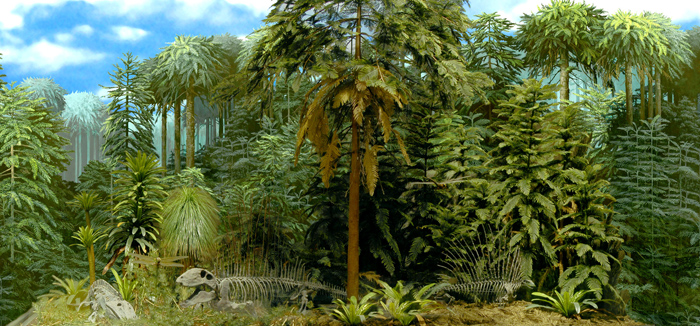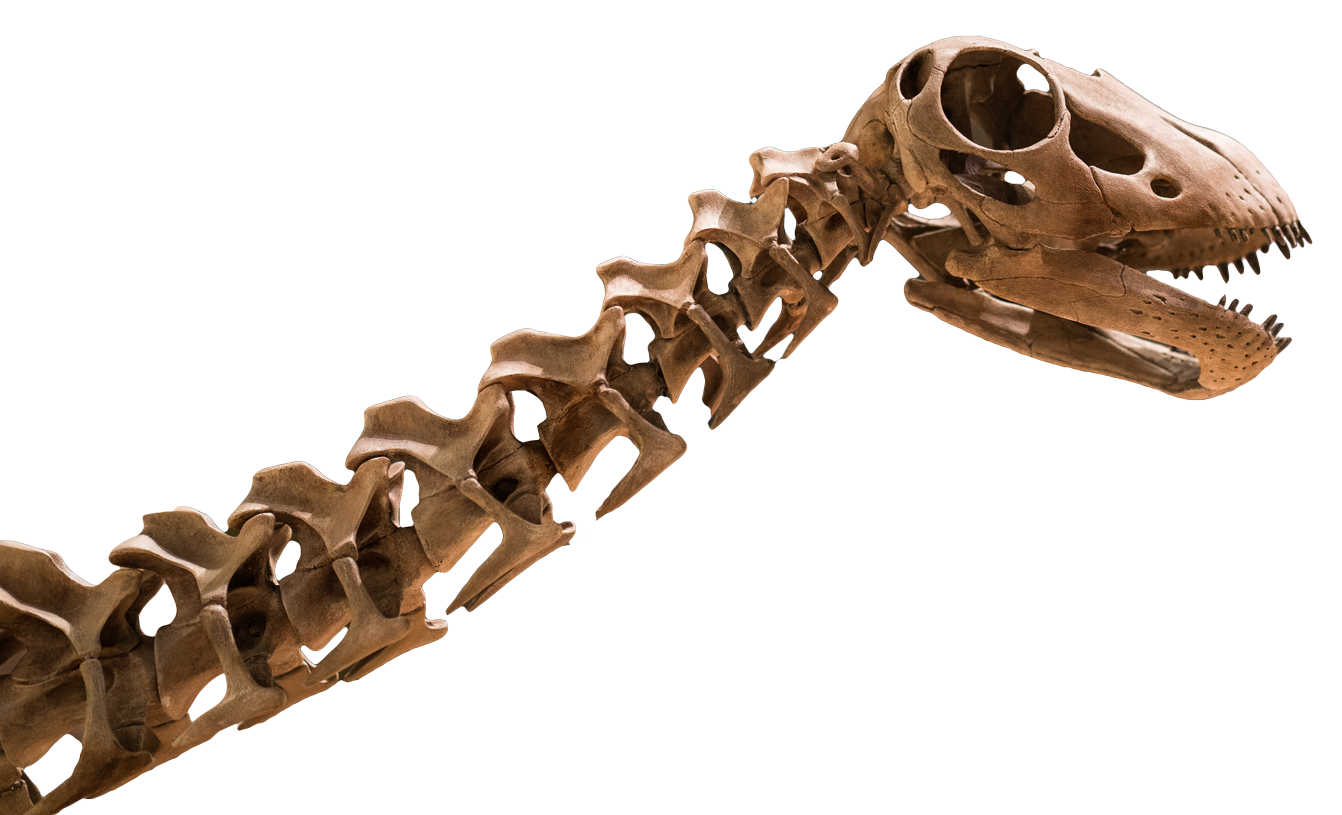Seed plants rise to dominate
By the Permian Period, local and global climates trended toward seasonally dry then persistently dry. Oklahoma’s tectonic drift carried north of the equator altering wind patterns and further drying climate. This climate shift resulted in the extinction of the vast peat swamps that covered Oklahoma. Most lycophytes had become extinct and ferns and horsetails began to decline as seed plants diversified and expanded.

The reconstruction illustrated above shows a somewhat atypically wet Permian vegetation that grew along a river in southwestern Oklahoma. Although most of the Permian in Oklahoma experienced drier climates, all of the plant communities were dominated by seed plants, with only a few ferns, horsetails, and lycophytes.
Can I find Permian plants in Oklahoma?
Yes. Permian fossil plants are much less common than Carboniferous plants, but have been found throughout central and southwestern Oklahoma.


